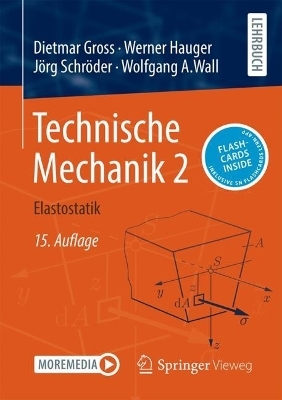
The Finite Element Method for Fluid Dynamics
Butterworth-Heinemann Inc (Verlag)
978-0-323-95886-8 (ISBN)
R.L Taylor is a Professor of the Graduate School at the Department of Civil and Environmental Engineering, University of California, Berkeley, USA. Awarded the Daniel C. Drucker Medal by the American Society of Mechanical Engineering in 2005, the Gauss-Newton Award and Congress Medal by the International Association for Computational Mechanics in 2002, and the Von Neumann Medal by the US Association for Computational Mechanics in 1999. P. Nithiarasu is Professor at Zienkiewicz Institute for Modelling, Data and AI and Associate Dean for Research, Innovation and Impact, Faculty of Science and Engineering, Swansea University. Previously he has served as the Head of Zienkiewicz Centre for Computational Engineering, Deputy Head of College of Engineering and Dean of Academic Leadership. He was awarded the Zienkiewicz silver medal from the ICE London in 2002, the ECCOMAS Young Investigator award in 2004, and the prestigious EPSRC Advanced Fellowship in 2006.
1. The equations of fluid dynamics 2. The finite element approximation 3. Convection dominated problems – finite element approximations to the convection–diffusion–reaction equation 4. Fractional step methods: the characteristic-based split (CBS) algorithm for compressible and incompressible flows 5. Incompressible Newtonian laminar flows 6. Incompressible non-Newtonian flows 7. Free surface flows 8. Buoyancy driven flows 9. Compressible high-speed gas flow 10. Adaptive mesh refinement 11. Turbulent flows 12. Flow and heat transport in porous media 13. Shallow-water problems 14. Long and medium waves 15. Short waves 16. Fluid–structure interaction 17. Biofluid dynamics – blood flow 18. Data-driven methods 19. Computer implementation of the CBS algorithm Appendix A: Self-adjoint differential equations Appendix B: Non-conservative form of Navier–Stokes equations Appendix C: Computing drag force and stream function Appendix D: Convection–diffusion equations: vector-valued variables Appendix E: Integration formulae Appendix F: Edge-based finite element formulation Appendix G: Boundary layer–inviscid flow coupling Appendix H: Multigrid method Appendix I: Mass-weighted averaged turbulence transport equations Appendix J: Introduction to neural networks
| Erscheinungsdatum | 12.12.2024 |
|---|---|
| Verlagsort | Woburn |
| Sprache | englisch |
| Maße | 191 x 235 mm |
| Gewicht | 1000 g |
| Themenwelt | Mathematik / Informatik ► Mathematik ► Angewandte Mathematik |
| Technik ► Maschinenbau | |
| ISBN-10 | 0-323-95886-9 / 0323958869 |
| ISBN-13 | 978-0-323-95886-8 / 9780323958868 |
| Zustand | Neuware |
| Informationen gemäß Produktsicherheitsverordnung (GPSR) | |
| Haben Sie eine Frage zum Produkt? |
aus dem Bereich


